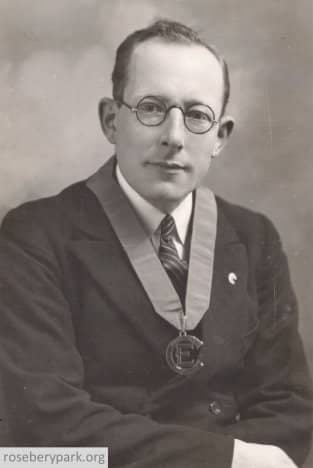
Rev. Ernest Rudman served as Minister from 1929 to 1936. In a tribute to him the September 1936 Church meeting summed up his seven years at Rosebery Park with the following minutes: “During E.G. Rudman’s ministry, membership doubled, there were sixty-eight baptisms; the debt on the buildings was removed; the premises renovated and Moordown and Iford Churches were established.”
The stats for 1933 were: 219 in membership; 83 children; 14 Sunday School teachers; and 3 lay preachers. In 1934 a six month series of evangelistic services were held on Sunday evenings at the Palladium Cinema, Seabourne Road, in joint arrangement with Boscombe Baptist Church. During the winter of 1935/6 further evangelistic services were held, at the Astoria Cinema (on the corner of Queensland Road and Christchurch Road, Pokesdown) once a month and speakers included author and journalist Hugh Redwood, the MP Ernest Brown, and founder of the Peace Pledge Union and first ever radio chaplain, Dick Sheppard. These were Big Names of the time and attracted large crowds.57
Rev. Ernest G. Rudman, Minister at RPBC 1929 to 1936. Photo property of RPBC.
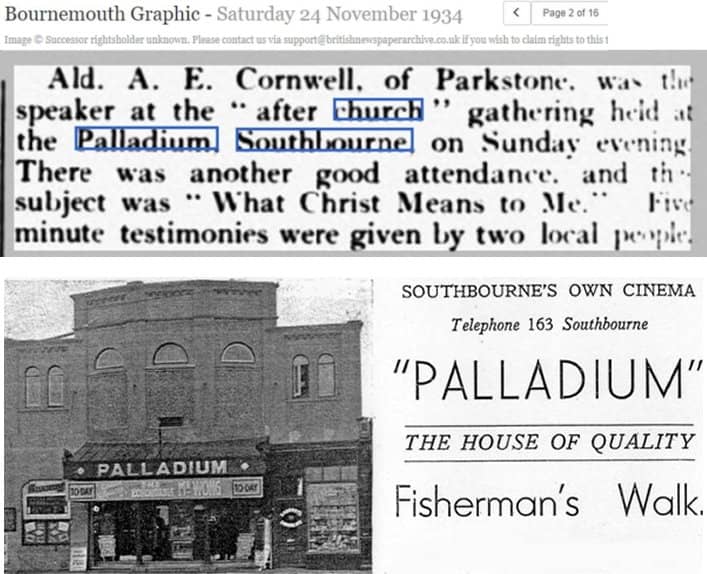
With thanks to The British Newspaper Archive. Photo from Primolux. © John Thornley & Bob Dodson.
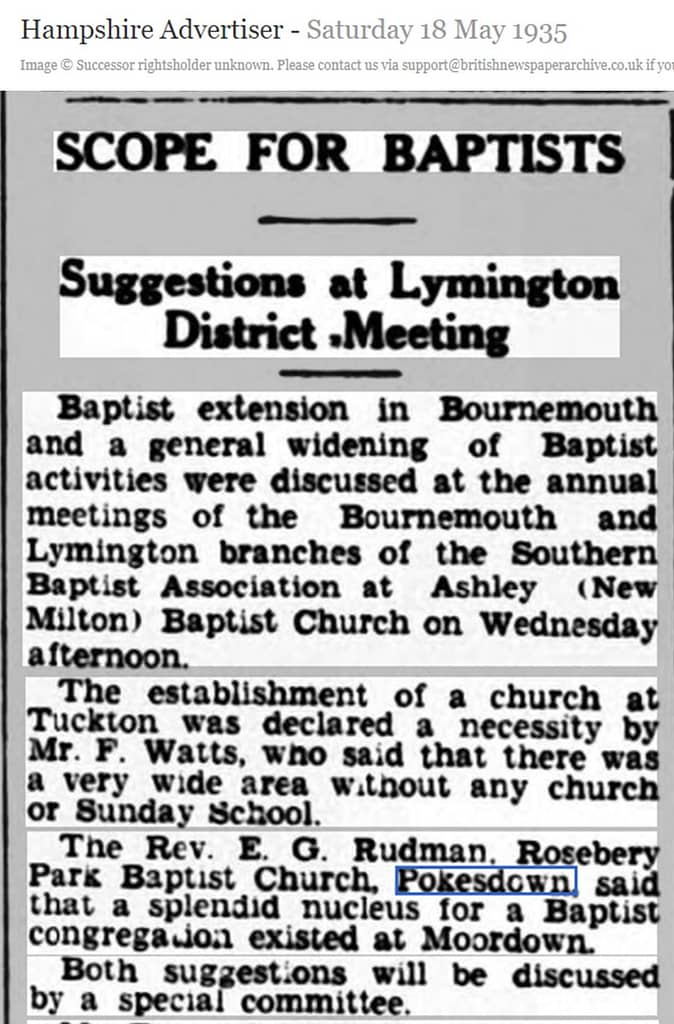
All rights reserved. With thanks to The British Newspaper Archive.
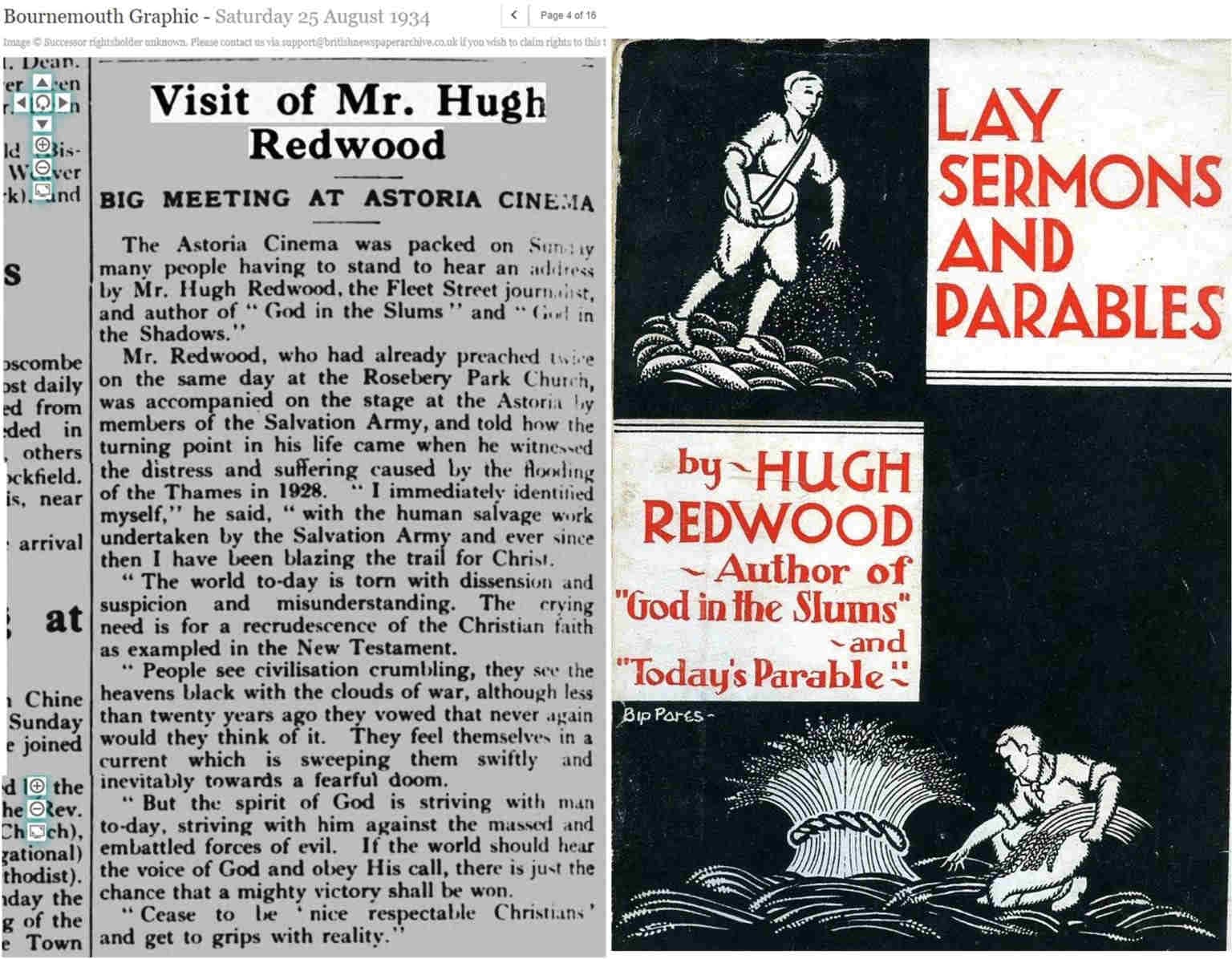
And book cover from Abebooks.
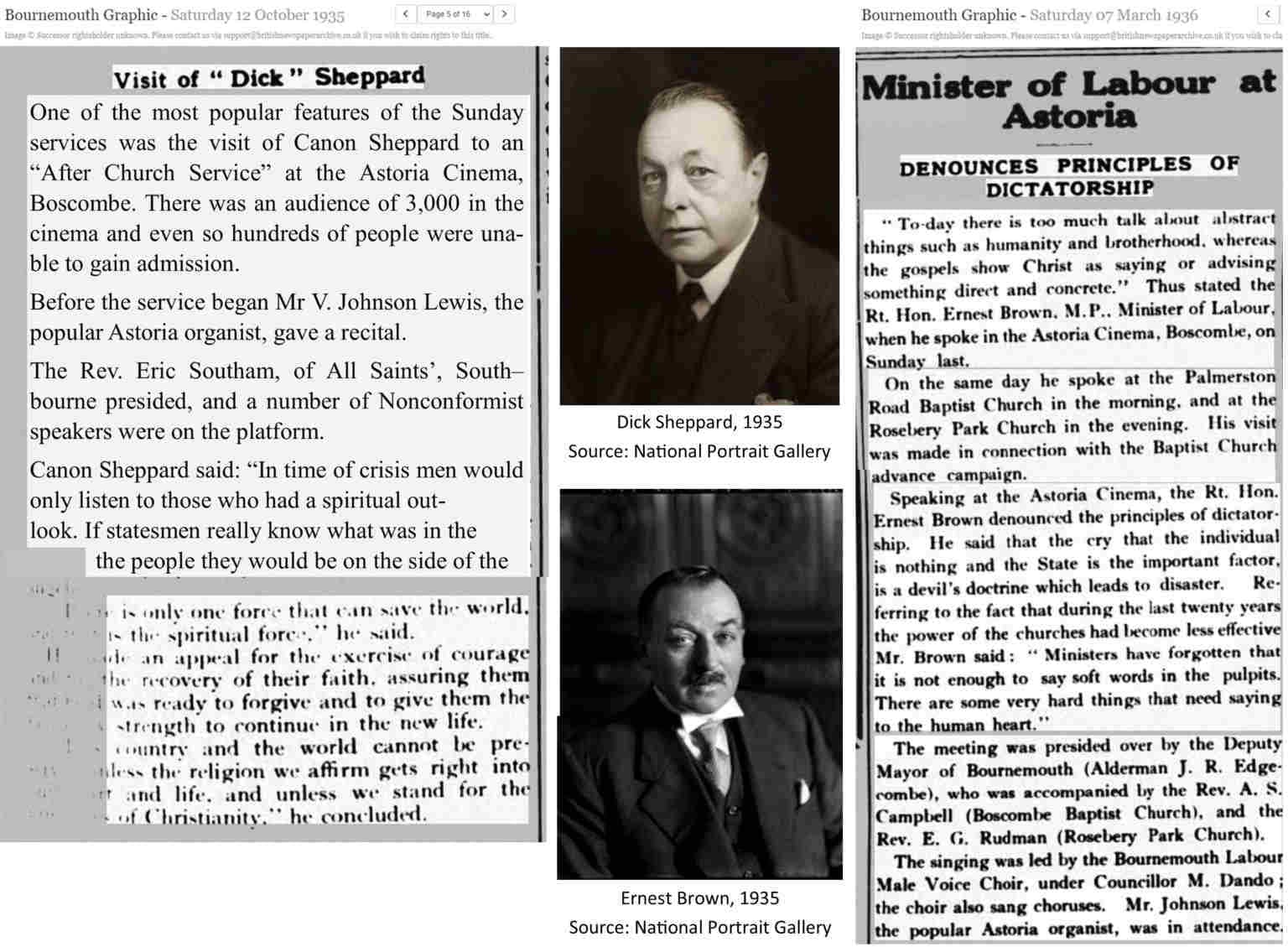
Plus photos from National Portrait Gallery. 57a
In the early 1930s, Jeans writes in the church’s history booklet, “There is no doubt that the activities of the Church were important in, and to the residents of the Rosebery Park Estate, and a suggestion to change the name to Pokesdown Baptist Church found no support.”58 But I58a wonder if Jean’s “no doubt” about the importance of the church’s association with the Rosebery Park Estate is an assumption based on the church member’s rejecting the name “Pokesdown”. And there could be another reason for that. As far as I am aware, the names of the original Victorian building estates, such as Rosebery Park, weren’t in common use by this time (1930s). I haven’t seen the name “Rosebery Park Estate” used during the twentieth century in any of the local history literature or newspapers. I’ve seen “Freemantle” used until the early 1920s,59 and “Boscombe Park” used in 1928.60 Perhaps the estate names served a useful purpose at the time, defining for investors what parcel of land and building project they were committing to, and as a marketing tool for the sale of individual building plots or newly completed buildings. But then were made redundant as the names of the roads became common knowledge? Is this why a change of name was being discussed? Because by 1930 few people could remember the origins of the name “Rosebery Park” and therefore in conversation its location was not clear? If that was the case, why reject the sensible suggestion of changing the name to “Pokesdown”? I speculate that the rejection of the name, “Pokesdown”, had more to do with what J.A. Young calls a “long-standing reluctance”61 on behalf of local residents to be tied to the name, “Pokesdown”. There is evidence of this! (See page, Pokesdown: the name).
A more “modern” look came to Bournemouth with the trolleybuses! After a successful 1933 experimental trolleybus route from the Square to Westbourne it was decided that all the tram routes would be converted to trolleybus operation over a three year period. As the Local Transport History Library describes:
“After the opening of the Bournemouth Square to Christchurch route on 8th April 1936, tram services ceased. Tram number 115 was the last tram to run from Bournemouth to Christchurch carrying the Mayors of the two towns along with other officials. At Tuckton Bridge, the borough boundary, the official party boarded the first passenger carrying trolleybus to run into Christchurch.”62
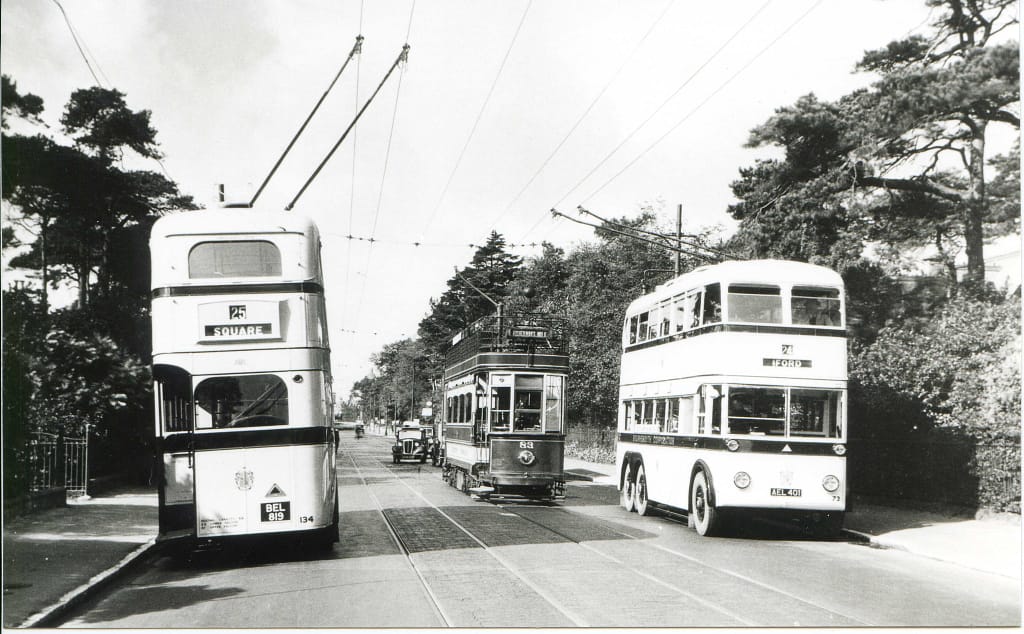
looking towards Lansdowne. Date: c.1935/36. Source: Alwyn Ladell Flickr.
The copy and paste citation for this page:
The History of Rosebery Park Baptist Church and Pokesdown, Page 9. Author: Michelle Fogg. Date: May 2022. Url: https://roseberypark.org/history/rosebery-park-and-pokesdown-9/
Sources of Information for The History of Rosebery Park and Pokesdown (opens in new tab)
Go To About Us
Go to Other Activities
Rosebery Park Baptist Church, 812-814 Christchurch Road, between Boscombe and Pokesdown, Bournemouth, BH7 6DF
